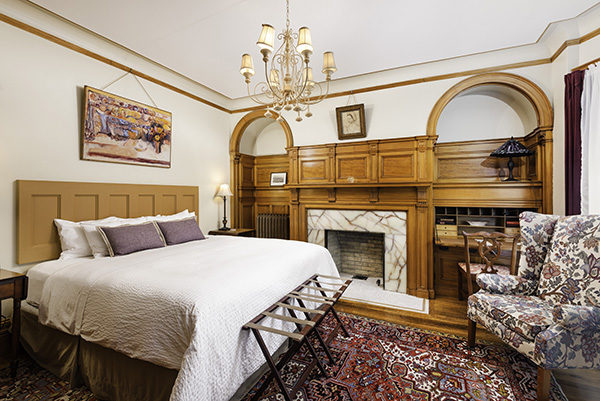Lighting for Real Estate Photography
There are 2 choices when it comes to lighting for real estate photography: using only available light or adding in additional light by incorporating flashes. If you’re planning to use flashes in your lighting set up, check out our article featuring the Best Flashes for Real Estate Photography.
If you’re looking to learn more about lighting options for real estate photography, then read on!
Table of Contents
Lighting for Real Estate Photography
No matter what type of lighting for real estate photography you use, it’s critical that you capture the best light possible. Whether you edit your own images, or you send them out to an editor, getting the best light on location will always lead to the best results.
Although some real estate photographers will swear that you must use one specific form of lighting for real estate photography over another, the truth is that it’s possible to capture excellent images regardless of which lighting technique you choose.
I personally use a flambient technique with several flash pops around the whole frame.
Personally, I think a well executed flambient technique will produce the best overall results, but there are a whole lot of photographers using HDR as their lighting for real estate photography and they churn out some seriously beautiful images.
Whichever lighting for real estate photography you use, learn it thoroughly and you’ll be able to capture high quality images.
Lighting Real Estate Photography: 4 Common Lighting Techniques
Lighting real estate photography can be done in any of the 4 following ways:
- Single Exposure
- HDR
- Single Flash
- Flambient
Single Exposure
Single Exposure photography is exactly what it sounds like. When you are lighting real estate photography with only the available light, and are only capturing one exposure. This will very likely lead to the poorest results.
We highly recommend you learn to use a different lighting for real estate photography technique. HDR photography takes only seconds longer and will inevitably produce a better end result.
HDR
HDR stands for High Dynamic Range. Shooting HDR Photography means that you’re only using available light, like natural light from windows and any lights turned on in the house. You capture several images at various exposures and blend them together.
For a deeper read on the settings used for HDR photography and how to use it as your technique for lighting real estate photography, check out our article A Guide to Camera Settings for HDR Real Estate Photography
Single Flash
Single Flash Photography is, obviously, when you use a single flash, usually on-camera, in addition to the available light. This is a good option for someone that wants to shoot quickly, but wants to use a flash in additional to ambient lighting.
Flambient
Many of the top real estate photographers use a combination of the above techniques and blend together multiple different exposures in Photoshop. Using both flashes and the ambient is called Flambient Photography.
A very lazy play on words where flash + ambient = flambient, but considered the top option if you’re looking for the best possible lighting.
HDR Photography generally uses 1 – 3 photos to create the final image.
Flash Photography generally uses 1 – 3 photos to create the final images as well.
Flambient Photography will always need more than one image since you need to blend both an ambient exposure and a flash expose together. Generally, there will need to be 3 – 5 photos to create the final image.
HDR Lighting for Real Estate Photography: Example and Explanation

Since HDR photography only uses available light, the only sources lighting this photo are the natural light from the window and the ceiling light fixture.
Without using a flash, you are stuck working only with what light the room already offers. If there are huge windows, this may not be a big deal. But in room like this, it can be tougher to deal with.
Shooting HDR is generally much faster than using a flash. You only need to set up the tripod and snap a few frames, then move on to the next shot. This is a major advantage for those real estate photographers who are trying to get a large quantity of jobs.
However, if HDR photography is not edited in the proper way, the photos can end up looking like some of the nightmares we’ve all seen on Zillow where the colors are all off and there’s no contrast.
Editing truly is the key to HDR photography. You have to be a skilled editor, or at least hire a skilled editor, if you want to capture high quality images using HDR as your technique for lighting real estate photography.
Single Flash Lighting for Real Estate Photography: Example and Explanation

Using one on-camera flash helps to light up parts of the room that would be difficult to see using only HDR photography. When the photo above is compared to the previous HDR photo, you can see that the colors are more vibrant and the corners of the room are better lit.
One on-camera flash does lead to the photo looking quite flat though. This means that you don’t get much depth or definition in the photo and the objects closer to the camera are brighter than the objects further away. Look at the bed frame vs the dresser to see this in action.
Lighting for real estate photography is all about balance, and thats difficult to achieve if the on-camera flash is too powerful. You need to learn how to use the flash to compliment the natural light available rather than overpower it.
Flambient Lighting for Real Estate Photography: Example and Explanation

Flambient photography uses a combination of the examples above. You can tell that the natural light is coming in from the window on the right since the right side of the bed is better lit than the left side. Additionally, this image doesn’t look flat since there is good definition and depth.
This look is achieved by combining HDR images with multiple flash photos. The flashes are used not just on-camera, but also on both side of the room. This allows for the best light possible to be used to make up the final image.
Flambient photography is by far the most time consuming, but also yields the best results and is considered to be the best lighting for real estate photography.
Additional Information on Lighting for Real Estate Photography
When deciding which lighting for real estate photography technique you’re going to use, it’s best to first figure out what is most important to you and your business model.
Do you want to photograph as many houses in a day as possible? Then HDR or Single Flash photography is probably the way to go. Both techniques allow for quick set ups since you may very well only be capturing one exposure.
Are you looking to create the best possible photo? If so, flambient is definitely the top choice since it incorporates all of the best possible lighting options.
If you do choose to use the flambient technique, you will need more time on location and for editing since you’ll be capturing multiple exposures for each angle.
Give our article, Comprehensive Guide to the Best Lighting for Interior Photography, a read for a more detailed look at natural vs artificial light and the advantages that each of them have for lighting real estate photography.
Finally, if you’re new to real estate photography and are looking to turn it into a side hustle or even a full time business, check out our Beginners Guide. It’s full of articles that will help you get started on the right path.
Check out our Gear page as well for reviews and recommendations on the latest real estate photography gear.
Frequently Asked Questions
How do I light my house for real estate photography?
The best thing you can do is open all of the shades and curtains around the windows. You want as much natural light coming inside as possible.
Should you turn on lights for real estate photos?
In general, yes. Unless the bulb is a weird color (blue, red, green, etc.) it’s generally considered best practice to have all of the lights turned on.
How can I shoot real estate photos without flash?
Using an HDR technique (explained above) is the best way to photograph real estate without a flash.

20 Comments